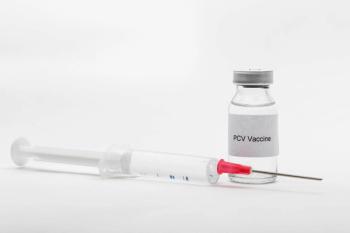
Examining the Impacts of Antimicrobial Stewardship Programs
Three posters presented at ASHP Midyear 2023 delved deeper into the topic of antimicrobial stewardship programs and their impact on antibiotic resistance.
Antibiotic resistance is a serious global health threat that leads to 2.8 million infections each year and kills an estimated 1.27 million people globally, according to reports from the CDC.1 This has led to the implementation of antimicrobial stewardship programs, which have improved use of antibiotics and minimized adverse events.2
Three posters that were presented at the American Society of Health-System Pharmacists 2023 Midyear Clinical Meeting and Exhibition looked deeper into antibiotic usage and the impacts of initiatives under antimicrobial stewardship programs.
For the first study, a team of investigators from the Samsung Changwon Hospital in the Republic of Korea examined how antimicrobial stewardship programs influenced long-term antibiotic use and overall prescribing. Data was collected during 5, 6-month monitoring periods from October 2020 to March 2023.3
The stewardship program’s impact was analyzed by total number of long-term antibiotics use cases, the proportion of inappropriate prescriptions per monitoring period, and changes in the proportion of long-term antibiotic prescriptions in overall antibiotic usage. Antimicrobial use was analyzed by day of therapy per 1000 patient days (DOT).
Investigators found that out of 305 long-term antibiotic use cases that were monitored, 32.7% were inappropriate. Piperacillin/Tazobactam was the most commonly prescribed antibiotic and was also the most inappropriately prescribed. The total number of cases for each monitoring period deceased after feedback from 73 cases during the first period to 43 cases in the fifth period.
Additionally, the proportion DOT of long-term antibiotic prescriptions in the first monitoring was 5.1% and decreased to 2.7% in fifth monitoring period.
“These findings suggested that long-term antibiotic monitoring could reduce the inappropriate antimicrobial exposure to each patients, however, it could not affect overall antibiotic prescribing trends in hospital,” the authors concluded. “Therefore, additional management strategies should be necessary to improve in overall antibiotic appropriateness.”
In the second study, investigators from the University of Arkansas for Medical Sciences assessed if the addition of new initiatives from an antimicrobial stewardship committee would decrease anti-Pseudomonal antibiotic usage.4 Data was collected each month from January 2021 through December 2022. The impact of the new initiatives were determined by cefepime, piperacillin-tazobactam, and meropenem days of therapy (DOT) per 1000 patient days.
The new initiatives included requiring urinary culture indication documentation to help avoid treatment of asymptomatic bacteriuria, utilization of matrix-assisted laser desorption/ionization time-of-flight mass spectrometry with associated clinical pharmacy surveillance alerts, and diabetic foot infection order set updates.
Investigators found that Cefepime, piperacillin-tazobactam, and meropenem DOT per 1000 patient days decreased from a mean of 93.3 per month before the intervention to 83.3 per month after the intervention. The new initiatives resulted in a 10.7% total decrease in anti-Pseudomonal beta-lactam antibiotic usage.
For the third study, investigators from OhioHealth Riverside Methodist Hospital conducted a study to “describe oral vancomycin utilization for secondary prophylaxis of Clostridioides difficile infection (CDI) in high-risk hospitalized patients and evaluate the risk of recurrence and re-hospitalization when re-exposed to systemic antimicrobial therapy (SAT).”5 Data from electronic medical records was analyzed between January 2020 and June 2021.
Patients were deemed to be high-risk if they were ages 65 and older, had any documented CDI history, and had exposure to SAT during hospitalization. The primary study endpoint was to determine current oral vancomycin prophylaxis (OVP) prescribing practices and readmission rates within 3 months of receiving OVP and SAT.
Investigators found that an OVP regimen of 125 mg taken 2 times a day was prescribed most commonly and had an average duration of 14.5 days. OVP in high-risk patients was prescribed most often by infectious disease and internal medicine providers. Cephalosporins and carbapenems were the most common antimicrobial classes prescribed for SAT at an average duration of 10.6 days.
Out of 35 patients included in the study, 17 were re-admitted within 3 months. Additionally, 1 of the 17 patients fit the criteria for a primary diagnosis of recurrent Clostridioides difficile infection and was on chronic acid suppressive therapy.
“While this study is descriptive with a small sample size, the results encourage further evaluation of the use of OVP, including optimal dosing strategy, during SAT in patients at risk of recurrent Clostridioides difficile infection as a preventative measure to reduce incidence of recurrence and readmission rates,” the authors concluded.
References
1. About Antimicrobial Resistance. CDC. October 5, 2022. Accessed December 11, 2023. https://www.cdc.gov/drugresistance/about.html
2. Huang, LJ., Chen, SJ., Hu, YW. et al. The impact of antimicrobial stewardship program designed to shorten antibiotics use on the incidence of resistant bacterial infections and mortality. Sci Rep 12, 913 (2022). https://doi.org/10.1038/s41598-022-04819-6
3. Jung C, Kim S, Bae M, et al. Impact of Long-Term Antibiotic Monitoring on Long-Term Antibiotic Use Patterns and Overall Antibiotic Use in Hospital. Presented at: American Society of Health-System Pharmacists Midyear Clinical Meeting & Exhibition; December 3-7, 2023; Anaheim, CA. Poster 8-030.
4. Crader MF. Impact of Diagnostic Stewardship, Rapid Diagnostics, and Order Set Interventions on Anti-Pseudomonal Antibiotic Usage. Presented at: American Society of Health-System Pharmacists Midyear Clinical Meeting & Exhibition; December 3-7, 2023; Anaheim, CA. Poster 4-038.
5. Durell A, Counts T, Kooser K, et al. Assessment of Oral Vancomycin for Secondary Prophylaxis of Clostridioides Difficile Infection (CDI) in Hospitalized Patients Requiring Systemic Antimicrobial Therapy (SAT). Presented at: American Society of Health-System Pharmacists Midyear Clinical Meeting & Exhibition; December 3-7, 2023; Anaheim, CA. Poster 4-031.
Newsletter
Pharmacy practice is always changing. Stay ahead of the curve with the Drug Topics newsletter and get the latest drug information, industry trends, and patient care tips.













































































































































